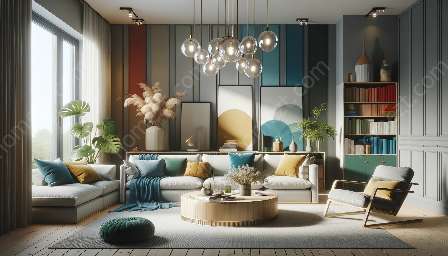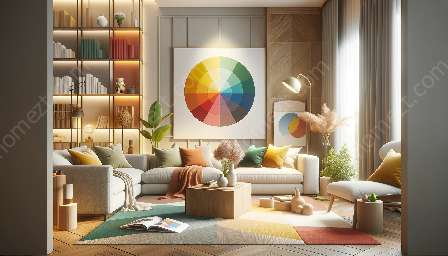The use of color as a form of visual communication has been prevalent throughout human history, making it an essential aspect of art, design, and even our everyday lives. Color symbolism, the practice of using specific colors to convey messages or evoke emotions, has been deeply ingrained in various cultures and traditions. In this comprehensive guide, we will delve into the intricate world of color symbolism, its relevance to color theory, and its application in home furnishings to create visually appealing and meaningful living spaces.
Understanding Color Symbolism
Color symbolism refers to the cultural, psychological, and social meanings associated with different colors. These meanings often vary across different cultures and historical contexts, contributing to the richness and complexity of color symbolism. While some associations may be universally recognized, others are deeply rooted in specific traditions and belief systems.
For example, red is commonly associated with emotions such as passion, love, and danger in Western cultures. In contrast, in some Eastern cultures, red symbolizes good fortune and prosperity. Similarly, blue is often linked to serenity, trust, and stability in many cultures, while in some cultures, it signifies mourning or spirituality.
Color symbolism is also influenced by individual experiences and personal preferences. For instance, a particular shade of green might evoke feelings of tranquility and nature for one person, while it may remind another of sickness or jealousy.
Color Theory and Symbolism
Color theory, the study of how colors interact and impact one another, is closely intertwined with color symbolism. The color wheel, a fundamental tool in color theory, categorizes colors into primary, secondary, and tertiary colors, as well as warm and cool tones. Understanding these color relationships is essential for effectively using color symbolism in design and decor.
Color harmonies and contrasts, such as complementary, analogous, or triadic color schemes, play a crucial role in leveraging color symbolism to create aesthetically pleasing environments. For example, pairing a vibrant red with a calming green can evoke a sense of balance and vitality, while using contrasting colors like black and white can convey a striking, modern aesthetic.
Applying Color Symbolism to Home Furnishings
Integrating color symbolism into home furnishings offers a powerful means of expressing personal style and creating atmospheres that resonate with inhabitants and guests. Whether it's through wall colors, furniture, accessories, or textiles, the use of symbolic colors can transform living spaces into visually compelling and emotionally resonant environments.
When selecting colors for home decor, it's essential to consider the intended atmosphere and the desired emotional impact. Warm hues like reds, oranges, and yellows can infuse energy and warmth into a space, making them suitable for areas of social gathering. On the other hand, cool tones such as blues, greens, and purples are conducive to creating a calm and serene ambiance, ideal for relaxation and contemplation.
Additionally, the psychological effects of colors should align with the functionality of each room. For instance, vibrant and stimulating colors may be well-suited for active areas like the kitchen or home office, while soothing and grounding colors are more appropriate for bedrooms and living rooms.
Conclusion
The use of color symbolism in the context of color theory and home furnishings offers a multifaceted approach to creating immersive and meaningful environments. By understanding the cultural, psychological, and design implications of different colors, individuals can harness the power of color to evoke specific emotions, convey personal narratives, and curate living spaces that tell compelling visual stories.
Whether it's infusing a sense of vibrancy and creativity through bold hues or cultivating a tranquil retreat with soothing palettes, the dynamic interplay between color symbolism, color theory, and home furnishings provides endless opportunities for personal expression and sensory experiences.


